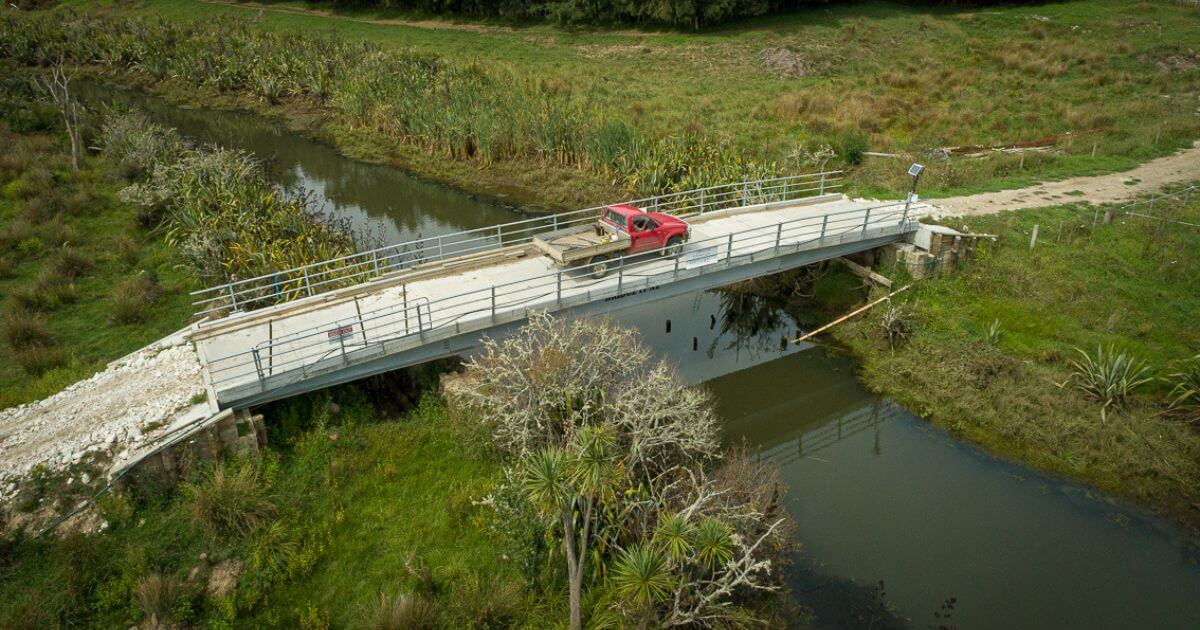Can Your Bridge Withstand a Flood?

The winter of 2022 will be remembered by many Kiwis as one of the wettest ever, with five separate weather events causing severe flooding up and down the country in July alone. Christchurch residents saw more rain fall in a single month (310mm) than since records began in 1863!
There’s no doubt climate change will result in more weather extremes in the years ahead. So if you own a bridge, knowing whether it can withstand a torrent of water is more important than ever.
During summer, it’s hard to imagine how high water levels may rise around your bridge. Land development, change in land use and climate change can all have an impact. While new bridges are typically designed to withstand 1 in 100 year flood events, older bridges (especially those designed before the RMA came into force in 1991), will not likely be as robust.
Potential Scenarios
When water levels rise high enough to partially or fully submerge a bridge, debris can build up and block the channel. This causes a damming effect and unleashes far greater forces on your bridge than water alone. During heavy rain, there are two common outcomes:
- Hydraulic loading – if your bridge sits in a restricted channel, the water is concentrated through that envelope. When that water rises high enough, the force of the water can lift and tip the bridge over if the connection between the bridge and foundation isn’t strong enough. A well-designed bridge will transfer the load onto its foundations instead. Piles or mass foundations help ensure these forces can be resisted but a bridge with poor foundations will likely be swept away.
- Ponding – sometimes waterways cannot drain quick enough so water builds back up the stream. This is common in tributaries that feed into a main waterway. This ponding will have very little hydraulic effect on the bridge but can still cause damage. Maintenance to remove debris and a general clean is a good idea. If you live in a coastal environment, the water may be saline so your bridge should be thoroughly cleaned to prevent excessive corrosion.
What Are Your Options?
- Build New - the good news is we can design structures strong enough to be partially or fully submerged and still remain intact. That gives you peace of mind during flood events.
- Inspect – Bridge It NZ engineers can inspect your bridge pre or post-flood to accurately assess the state of your bridge and potential for, or signs of, damage. We can also recommend maintenance actions and provide an obligation-free quote.
- Maintain – People often neglect to maintain their bridge by regularly removing dirt and debris and looking for any signs of corrosion. Read our guide on the essential things to check.
- Catchment analysis – this involves modelling a cross section of your waterway to determine the likelihood of it being submerged in a flood event. Your bridge could then be assessed to determine its strength.
- Temporary Crossings – if the worst has already happened and your bridge is damaged or destroyed, Bridge It NZ can provide immediate support with temporary crossings. Sometimes existing foundations can be used to install our range of HNHO-72 temporary bridges (6m x 3m or 12m x 3m). We can also provide advice and quotes to repair or replace your bridge permanently.
While maintenance and professional inspections may seem like an unnecessary expense, it pales in comparison to the cost of a full bridge replacement. As our weather patterns continue to become more damaging and erratic, it’s worth thinking ahead and taking what steps you can to protect your bridge and ensure its longevity.
If you need help to assess your bridge’s strength or ability to withstand a flood, speak with one of our team today.

